Germany is considered too late in its responding to the rapid popularity of the Japanese SLR in the sixties. And the German SLR in general also did not become the long-awaited success; in fact, it became the downfall of the camera industry. Only Leica managed to survive thanks to the unequalled Rangefinder series. It’s a pity that the Leica SLR always has been overshadowed by its big M brother, because there is a lot to be said for Leica’s SLR, especially the legendary Leicaflex. It is now on the rise, finally after sixty years of oblivion.
My camera has just arrived from the Leica classic shop in Vienna. To my surprise, I found a good-looking, fully working one at a reasonable price. In a leica shop! Prices on eBay have been rising in recent years due to the increasing popularity of film cameras, a new hobby during the Covid-19 crisis and the rediscovery of manual photography. It all comes together in the rising prices. Then you sometimes forget the expensive addresses where sometimes jewels are waiting for a new owner, sometimes unexpectedly well priced. My Leicaflex from 1971 is of the second generation, the SL (Selective light), which measures the light through (the middle of) the lens. The original Leicaflex uit 1964 measures the light indirectly through an uncoupled CdS. The first thing to notice is the heavy weight of the solid Leicaflex, a tank of almost 800 grams without lens. Another characteristic of Leicas in general is its focus on essentials. No unnecessary buttons or dials, only what is needed to take pictures. The Leicaflex is such a ‘clean’ camera, with a shutter dial and wind lever on the right side.
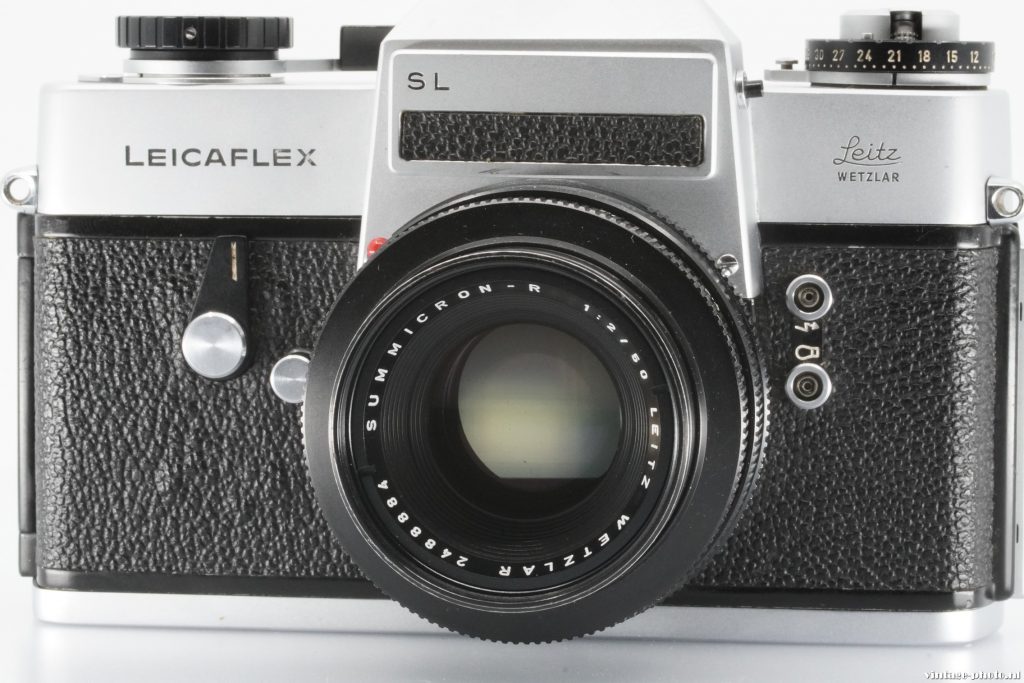
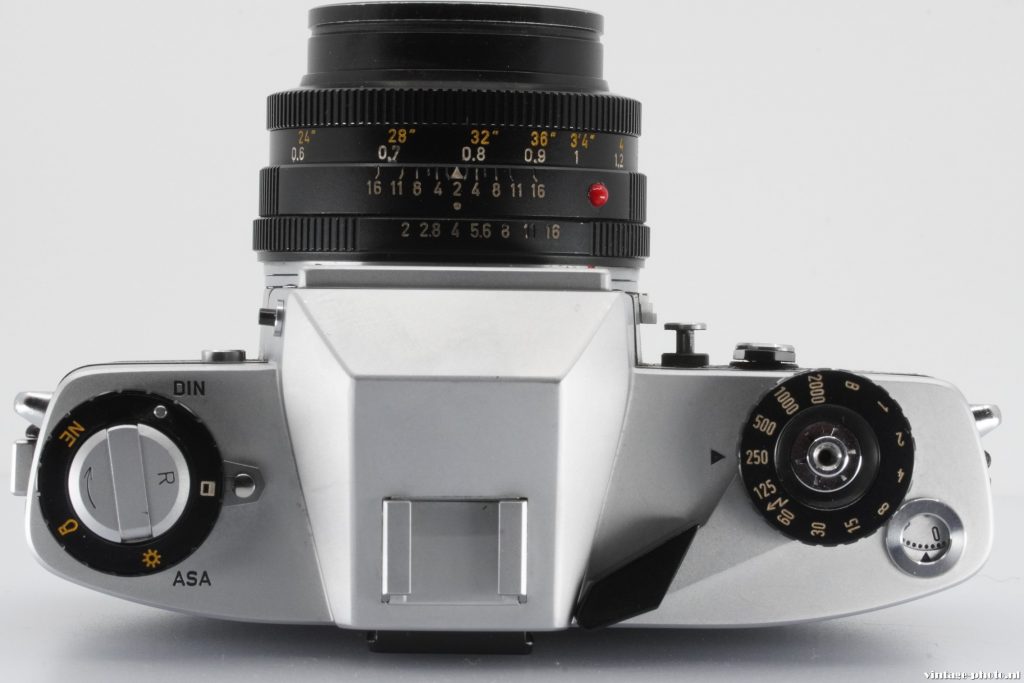
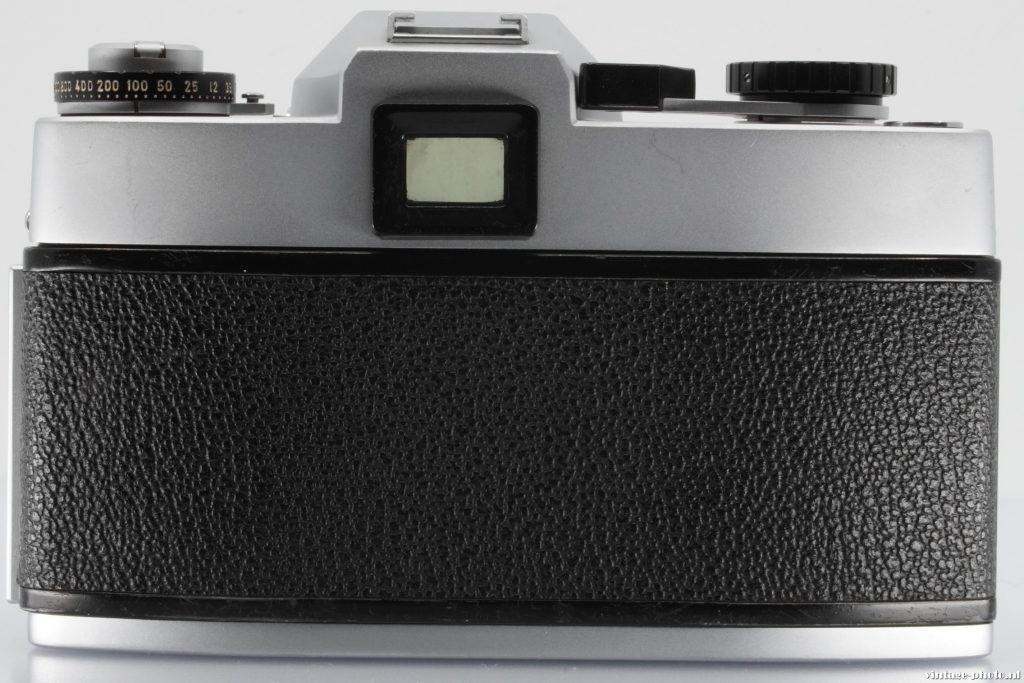
In the middle on top of it the shutter knob. And what a sound. You would like to own a Leicaflex just for the beautiful sound of the shutter. From 1s to a whopping 1/2000s, a very fast one for the time! On the other side is a linked ISO/ASA switch from 12 to 3200 or in DIN. On top of that is a reminder dial for the type of film in the camera. Coupled means that the light meter responds to the selected setting. On the front, the mechanical self-timer and lens release button are located to the left of the lens mount. On the other side are the PC sync flash connections for electronic or bulb flashes. The sync speed is 1/100 for electronic flashes and up to 1/250s for old fashioned bulbs. However, the lens mount is the biggest innovation. With the Leicaflex, Leica has introduced the R-mount. For the first time, besides the classic M-mount, a new lens mount design was developed for the SLR that no longer uses framelines. The R-Series expanded rapidly, especially after the R-Series SLR was launched in 1976 and became a huge success. The first lens, the Summicron-R F2/50 mm, became the ‘kit’ lens for the Leicaflex. Six lenses in four groups with a shortest focusing distance of 50 cm. The Summicron has long been loved by photojournalists as one of the very best 50mm lenses. Tackle-sharp from F2.8 onwards, from centre to edge and with the characteristic Leica looks, high contrast, vivid, vintage “Leica colors”.
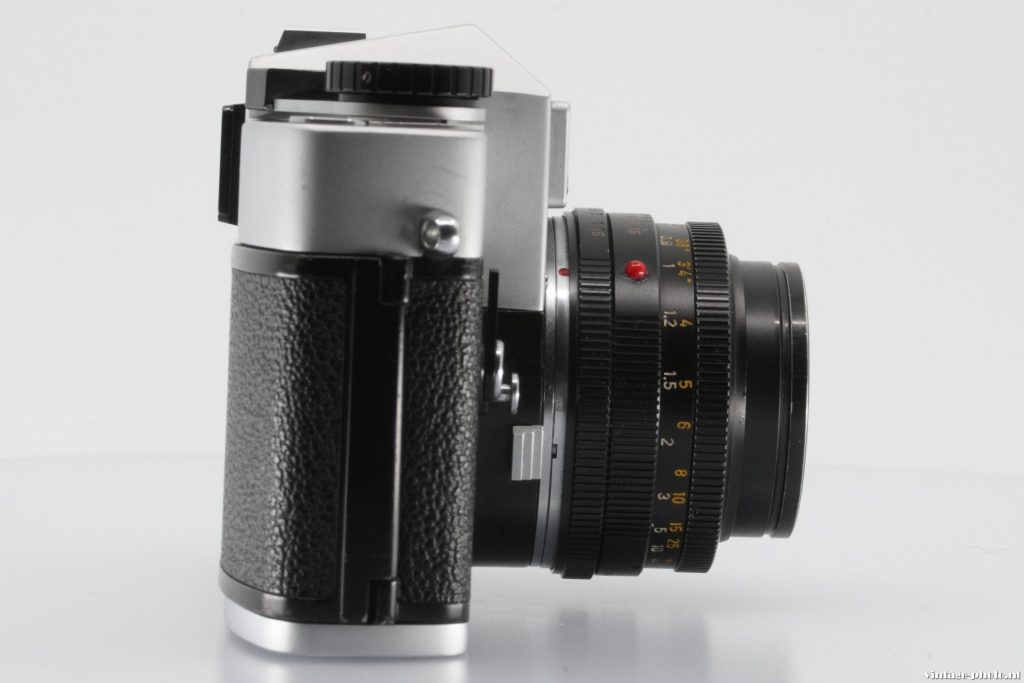
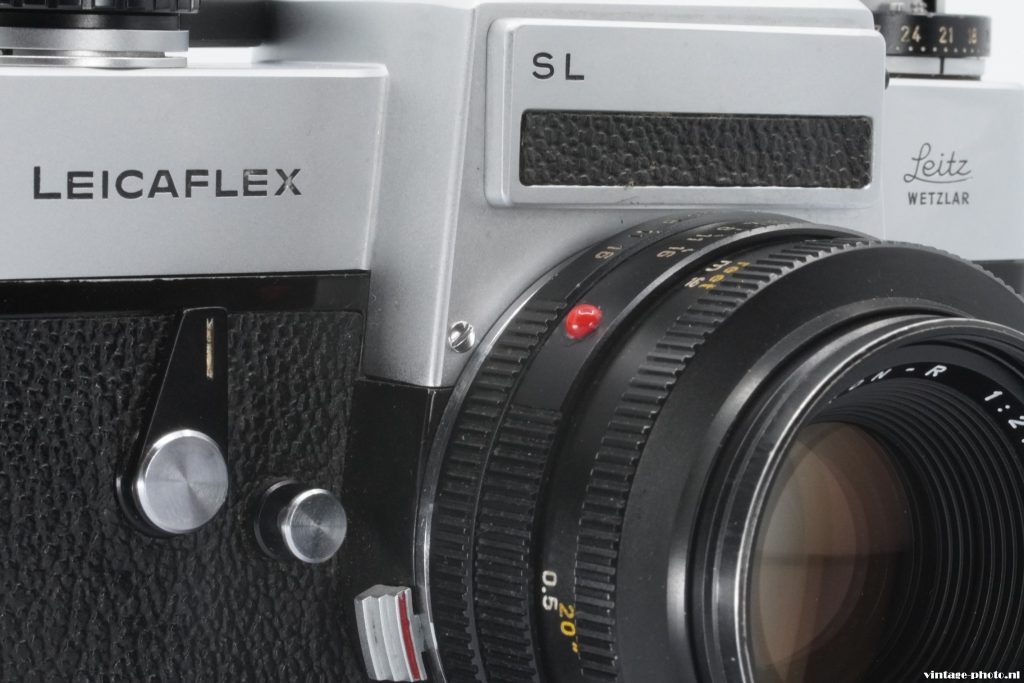
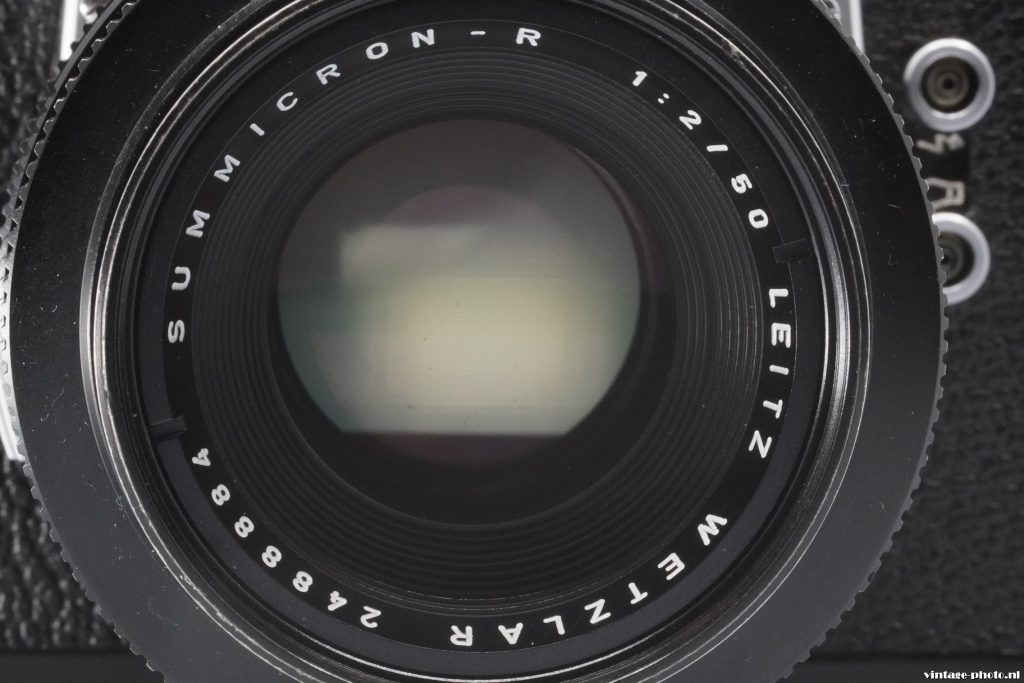
Meanwhile, I also have the Elmarit 135/2.8, the affordable telephoto lens that also performs very well. Compared to the M lenses, the R lenses are ‘cheap’ by Leica standards while having the same quality, optically and in terms of construction. The R lenses work with “cams”. These communicate mechanically with the lens mount. 1 cam lenses have a single sloped cam that communicates aperture with the lens mount. 2 cam lenses have two sloped cams that communicate for TTL metering. The 3-cam, R and electronic ROM versions are designed for the later R-series. The Leicaflex can also support the 3-cam versions. Apart from the lens mount, the viewfinder of the Leicaflex is special. Not only is it a bright and large viewfinder image. The shutter speed can be read transparently in a vertical bar. On the right is the light meter, a fixed mechanical needle scales the selected shutter speed or aperture and the meter needle that electronically indicates the required value. This requires a readily available PX625 battery, manufactured by e.g. Varta.
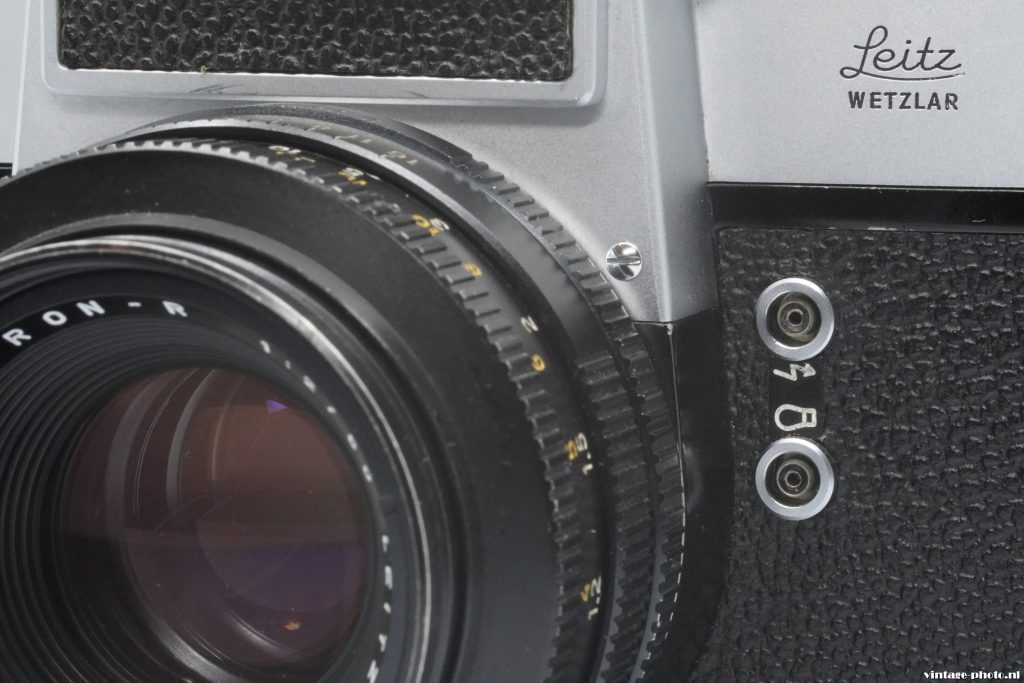
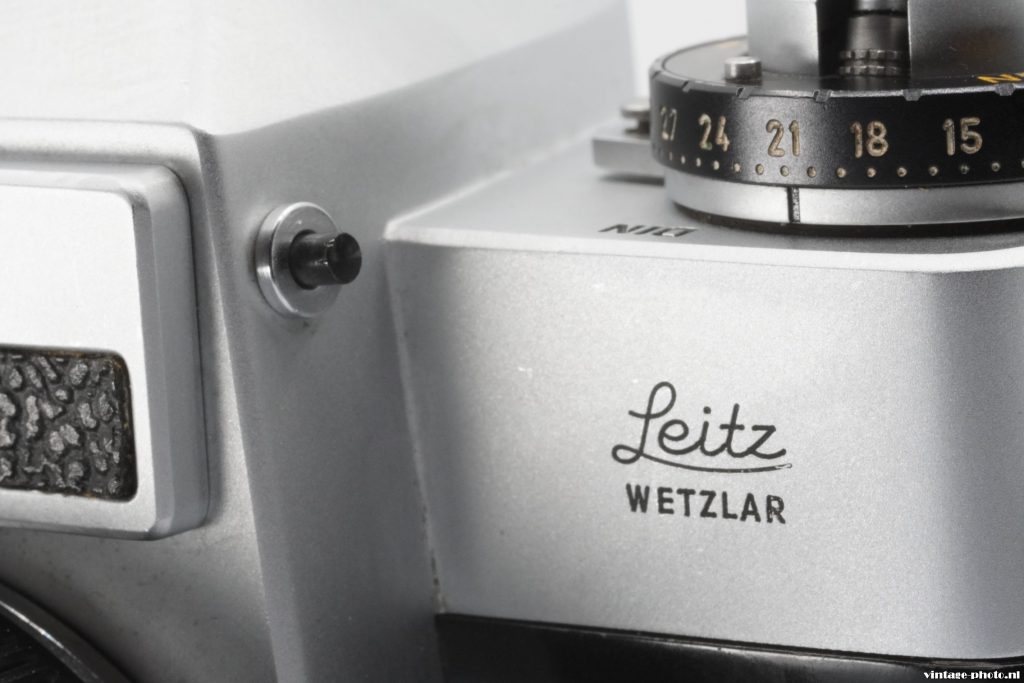
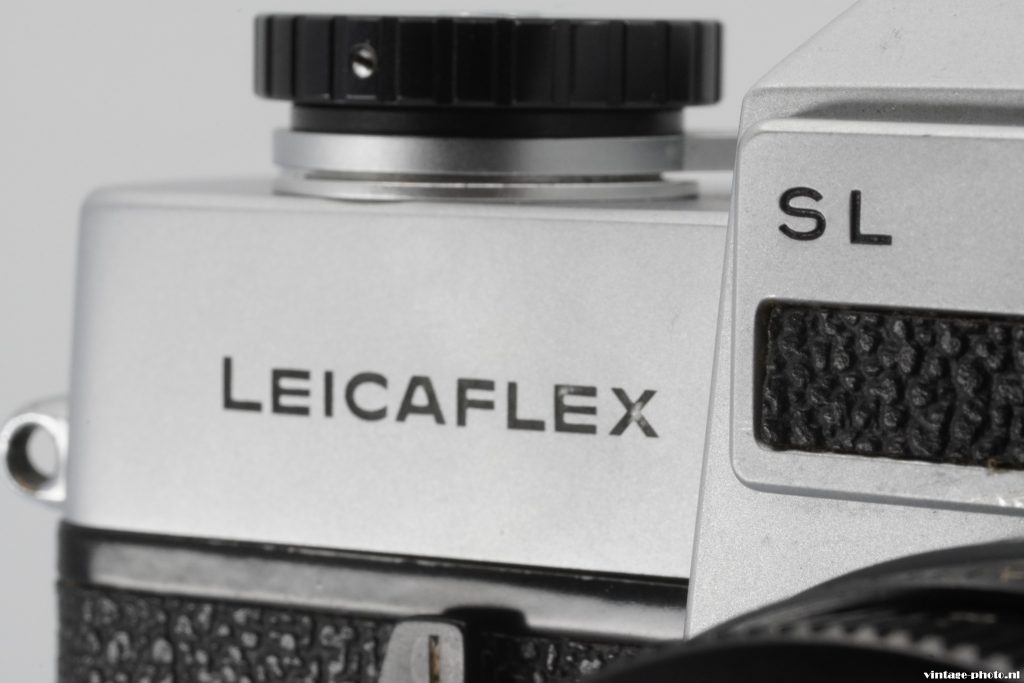
On the other side is a linked ISO/ASA switch from 12 to 3200 or in DIN. On top of that is a reminder dial for the type of film in the camera. Coupled means that the light meter responds to the selected setting. On the front, the mechanical self-timer and lens release button are located to the left of the lens mount. On the other side are the PC sync flash connections for electronic or bulb flashes. The sync speed is 1/100 for electronic flashes and up to 1/250s for old fashioned bulbs. However, the lens mount is the biggest innovation. With the Leicaflex, Leica has introduced the R-mount. For the first time, besides the classic M-mount, a new lens mount design was developed for the SLR that no longer uses framelines. The R-Series expanded rapidly, especially after the R-Series SLR was launched in 1976 and became a huge success. The first lens, the Summicron-R F2/50 mm, became the ‘kit’ lens for the Leicaflex. Six lenses in four groups with a shortest focusing distance of 50 cm. The Summicron has long been loved by photojournalists as one of the very best 50mm lenses. Tackle-sharp from F2.8 onwards, from centre to edge and with the characteristic Leica looks, high contrast, vivid, vintage “Leica colors”. Meanwhile, I also have the Elmarit 135/2.8, the affordable telephoto lens that also performs very well. Compared to the M lenses, the R lenses are ‘cheap’ by Leica standards while having the same quality, optically and in terms of construction.
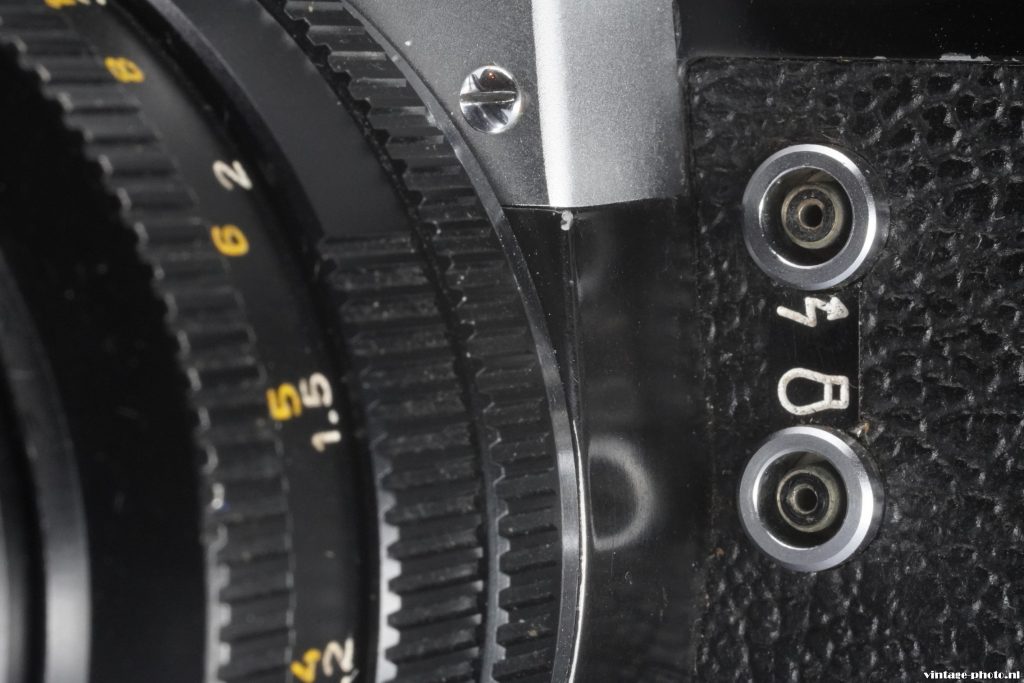
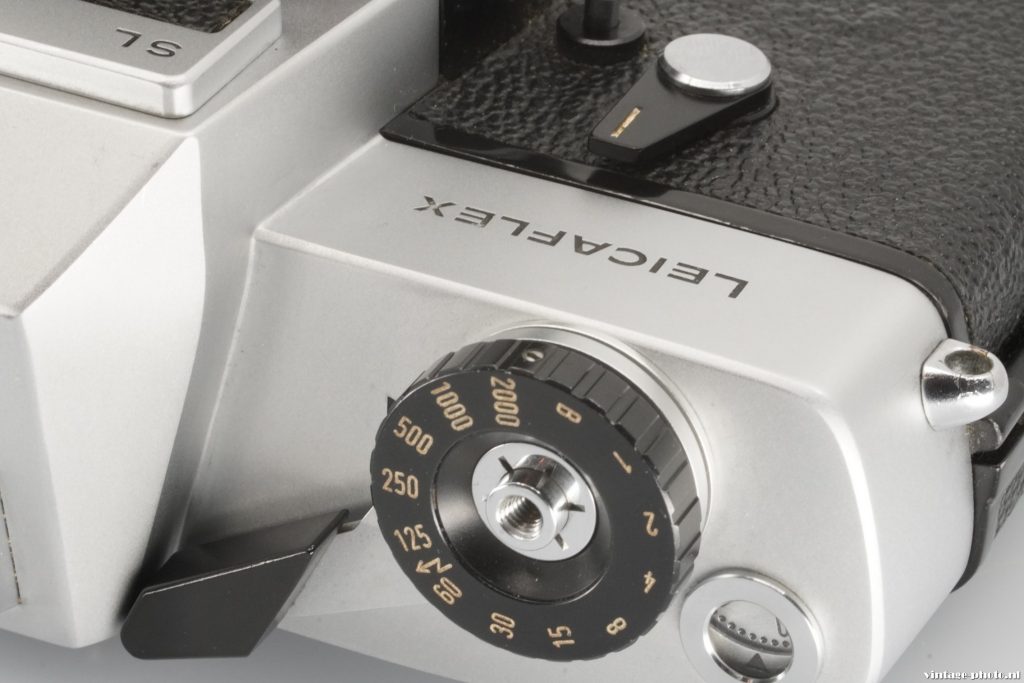
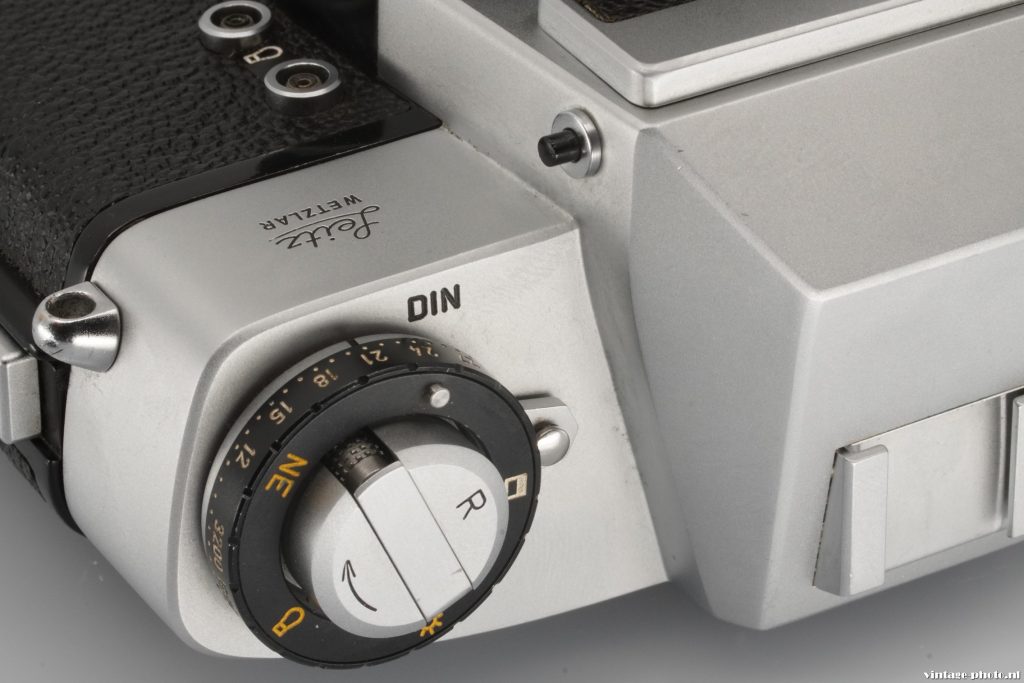
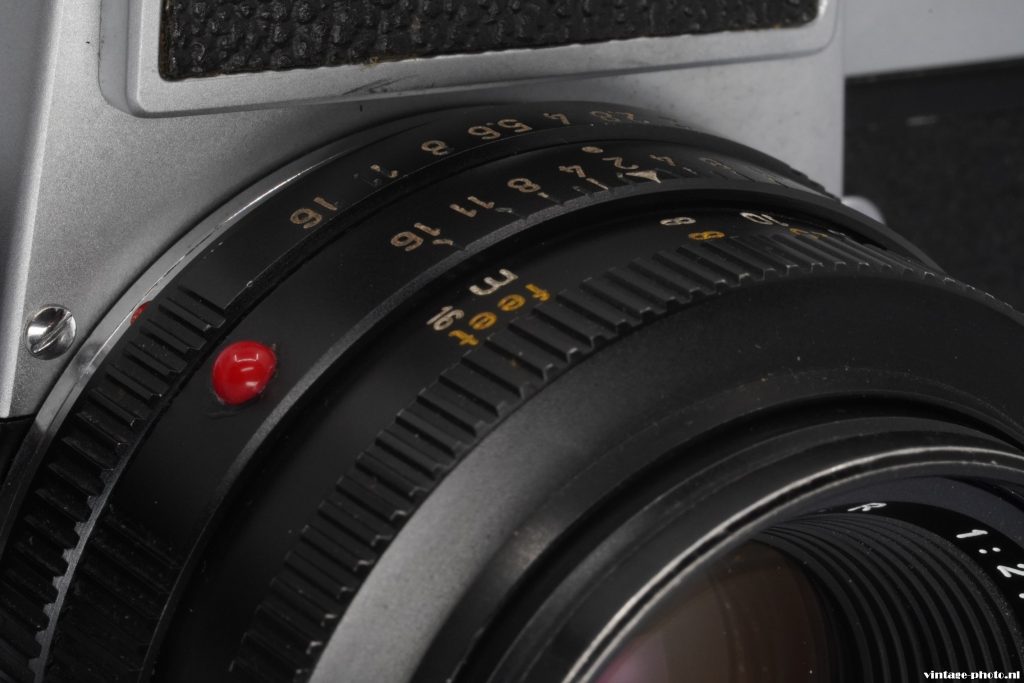
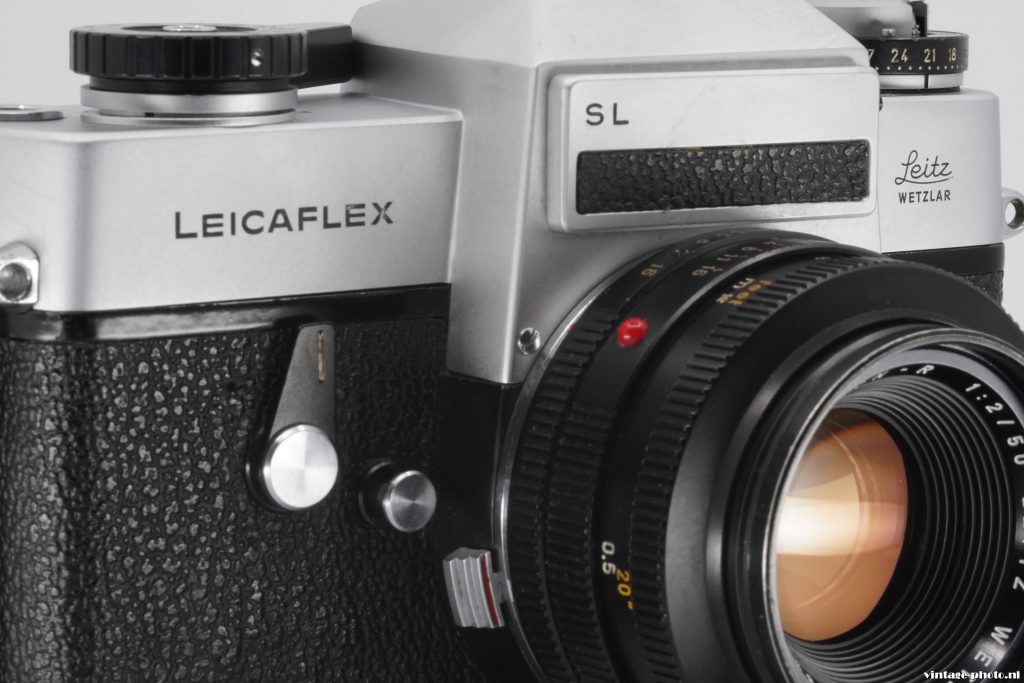
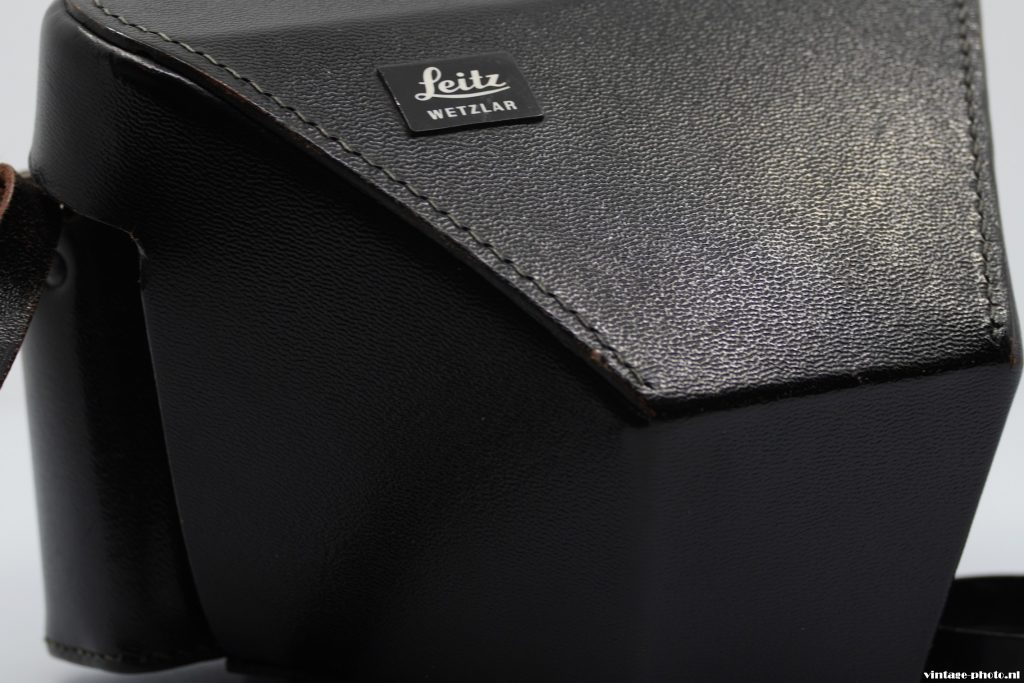
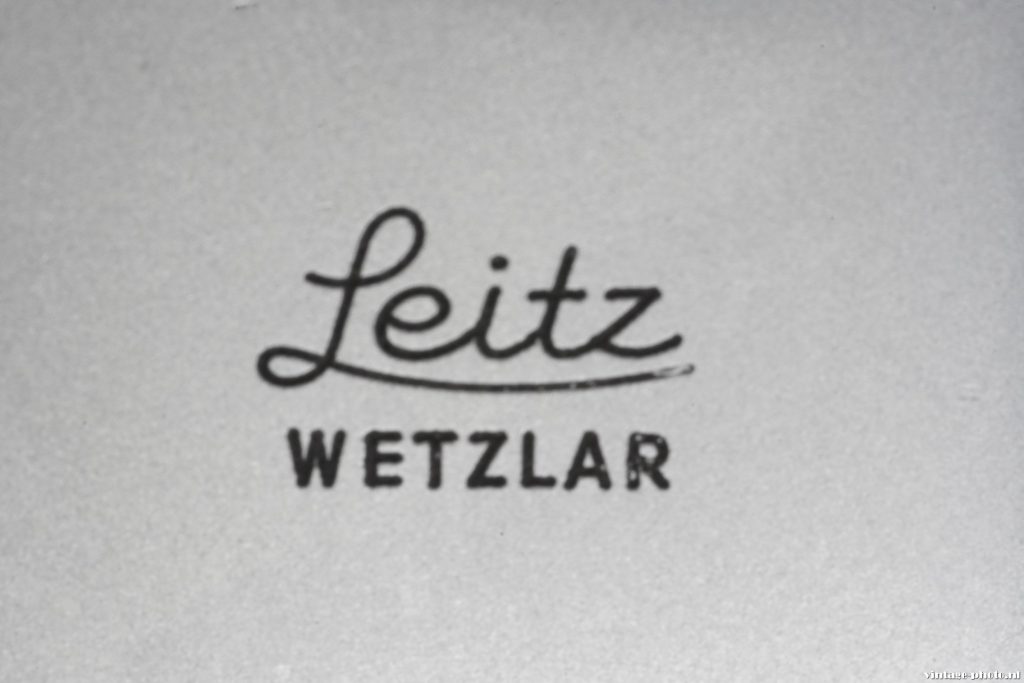
Changing either the aperture or shutter speed moves the needles towards the needed setting. In the middle of the frosted focussing screen there is a little microprism for exact focussing. Left of the finder there is a little battery life checker lever. If the needle does not come all the way down after pressing it, it is time to replace the battery. To spare battery life, the measurement only takes place after winding the film and keeping the single stroke lever to the right. Pushing it back all the way to the body puts the battery off.
On top of the finder there is a cold shoe for accessories. On the bottom plate we find the tripod connection, the safety button for rewinding the film and the battery compartment. For the first time, inserting a 135 film is easy with Leica. Since the Barnack Leica and also the M series, the bottom side has to be removed and it is a hassle to insert the film. The Leicaflex is child’s play when it comes to changing films. The camera undeniably should come with the famous black leather camera bag. A very straightforward but sturdy design that fits this Leica tank with a 50mm lens.
A Leica enthusiast cannot escape a leicaflex. It is a completely different camera from the M, but at the same time very familiar. A forgotten descendant that is extraordinary, indestructible and has an exceptional shutter.
The price is not a big issue, considering it is still a Leica. But buy your camera from a camera dealer so that you can be sure that the light meter works, the suiterground is intact and the shutter speeds work correctly. But even after sixty years, you should have high expectations. It is a Leica, after all.
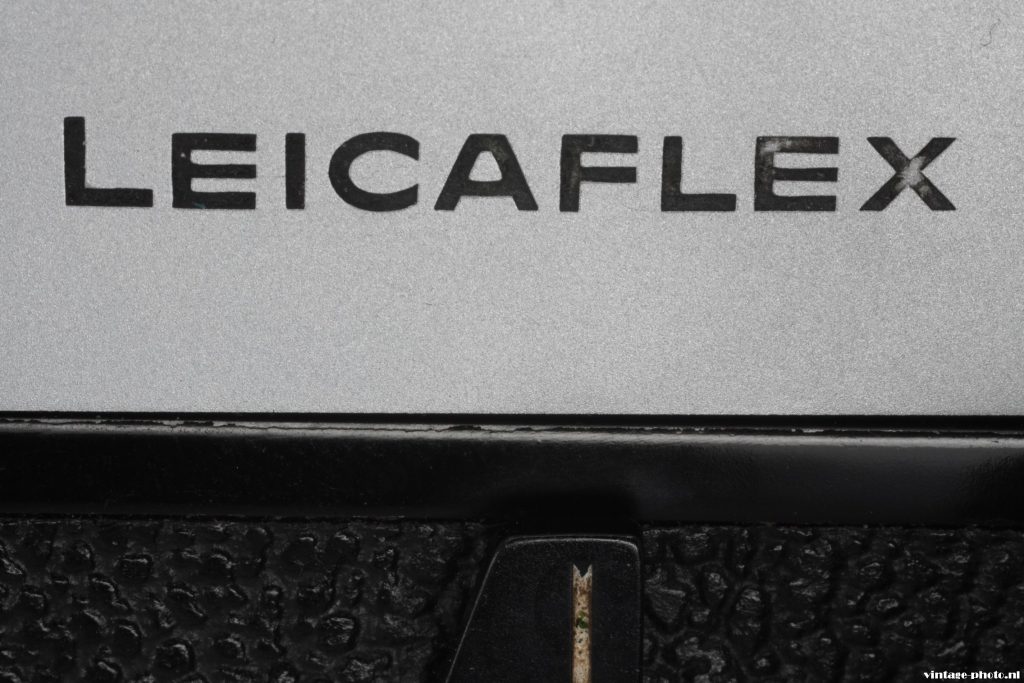


Hi! Excellent review and I am a happy and proud owner of the Leicaflex for a few years.
Can you please check the text again. I have the impression that part of it is triplicated (above and a bit below of the PX625 mentioning)
Thanks, we did delete the ‘double’ text!
Having used a pair of M3 bodies with 35/3.5, 50/2.8, 90/2.8 and 135/4.5 lenses for many years, I was tempted by the Leicaflex. The quality of build is amazing, well up to M3 standards. I noticed that the lenses were rising in price due to people who adapted them for Japanese digital cameras. I got busy and bought 28/35/50/90/100/135/180/250 lenses.
The 100 is my go to portrait lens, the 250 with tripod mount is used at cricket matches on a thick monopod. The 180 f4 is a very useful travel lens. The 28 and 50 are the lightest and are also used for travel. The 35 is excellent for street photography. I prefer handheld metering and have a Weston Master V and Sekonic Studio Deluxe 11 for incident metering. Both meters work independently of batteries. The Leicaflex trio and their lenses are seriously heavy. However, it’s built to last. My body dates to 64 and the 90mm f2.8 to 65. Very little signs of wear, working fine. I don’t use zooms as they are far too slow or the f2.8 ones weigh far too much for my liking. My 100-180-250 are F4, 35-50 are f2 and the rest f2.8. With the very bright focus screens of the trio, f4 is not a problem.
I’ve now acquired three R8 bodies . I can report that automatic exposure plus matrix metering is excellent. I enjoy using this kit with my R lenses and achieving excellent results. Of course I am aware that these bodies are not repairable and that they are destined to be paperweights. So I have a pair of Leicaflex bodies to use my dozen lenses on if they (the 3 R8 bodies) pack up.